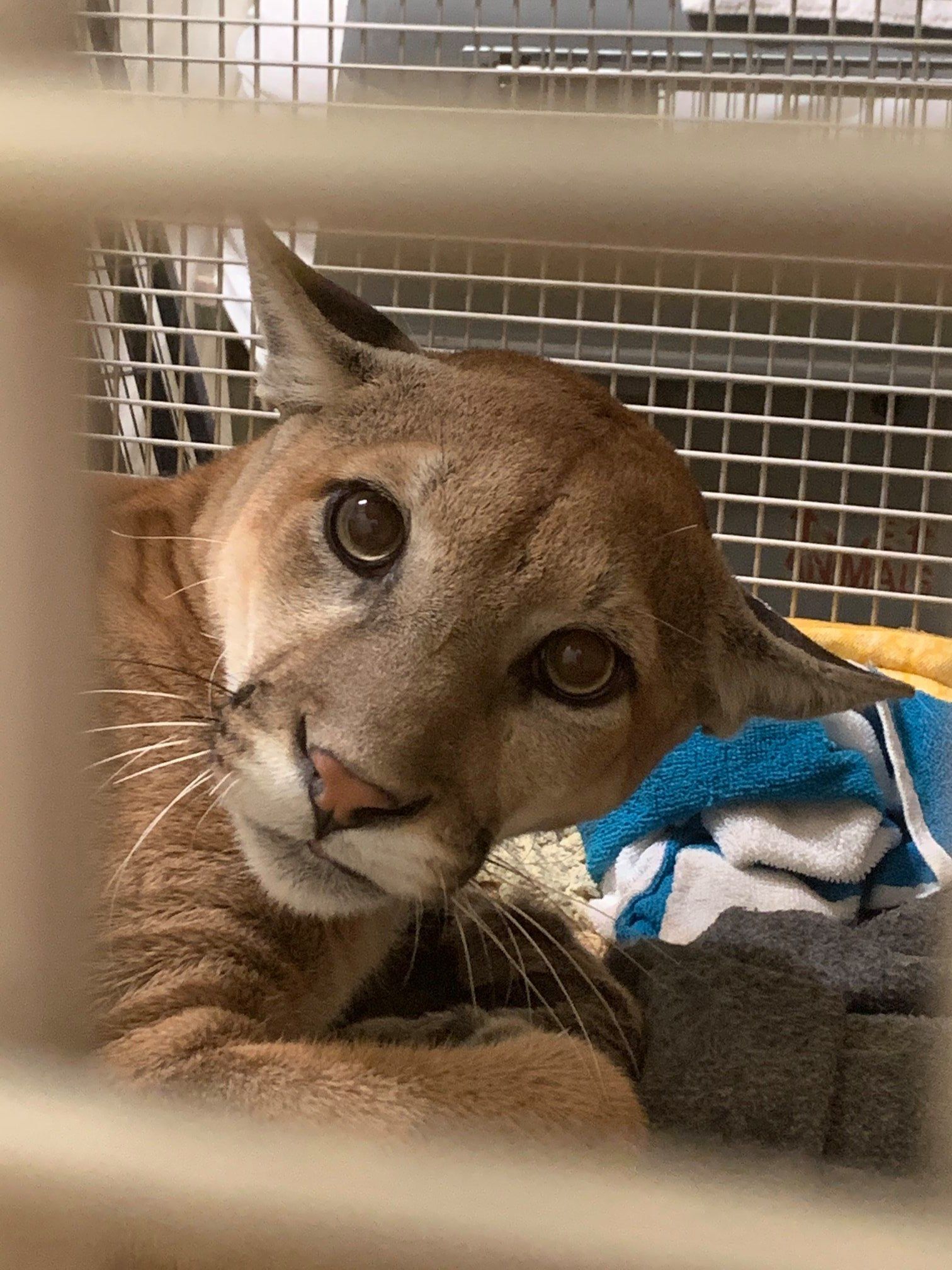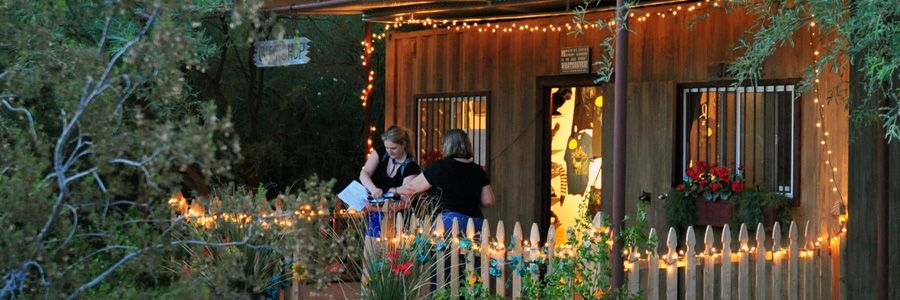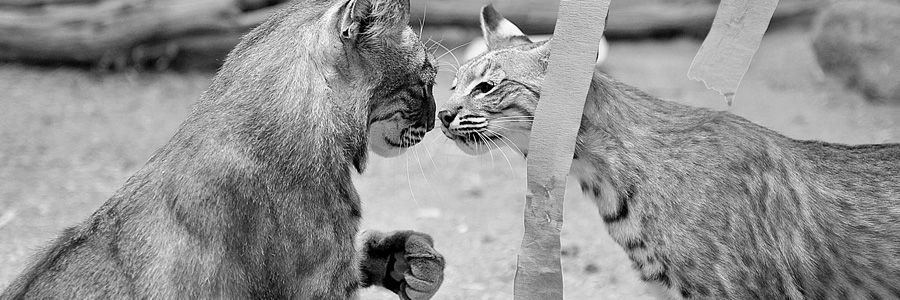
A few days ago, a 2-year-old male mountain lion arrived at SWCC to stay. Our social media followers have a lot of thoughtful, earnest questions on why a healthy mountain lion can't be released back into the wild. We consulted our animal care experts, and here's the low-down.
A little situational background:
Mountain lions stay with their mother for 18 months before they ‘disperse,’ or, go off on their own. The 2-year-old lion that was recently captured in North Phoenix had not been dispersed from his mother for very long. Unfortunately, he entered an urban area; he was most likely chased out of his original habitat by the dominant male lion in the area. Had he not moved out, the adult male lion in the territory he was in would have killed him. Arizona Game and Fish did not want to capture the lion, so they gave him ample opportunity to leave. The fact that he didn’t leave created worry about human safety. He did not seem that uncomfortable with humans around. That is a big concern. They were left with only two options: euthanize him or place him in a licensed sanctuary facility
Reasons to remove an animal from the wild:
- Close contact with humans (to protect human safety).
- Habituation - usually caused by people feeding the animal (another human safety concern).
- Failure of the animal to leave an inhabited area (cause for future issues with that animal).
Reasons wildlife can’t always be relocated:
- Disease. You could be transferring a disease into another population which could be devastating.
- Safety issues. If an animal shows signs of being habituated (lack of fear of humans, nuisance activities) the likelihood of future trouble is extremely high.
- Territory. Male lions are very territorial. No matter where you put them you are putting them in another male’s territory. That’s not fair to either lion.
- Aggression. Male lions will chase off or kill other males in their territory. What we may see as a large swath of open land is some lion’s territory, and they will defend their territory to death. (If you were dropped into a strange country, you would not know where the food or water is, and if the residents did not want you in their neighborhood, your chances of survival would be very low.)
- Survival Rates. The survival rate of relocated wildlife ranges from 20-50%, depending on the species. It is always best to leave them and not relocate them. But when they become a public safety issue, that is not always possible.
Sadly, options for large predators – like adult, male mountain lions - are very limited. In this case AZGFD decided to place him rather than euthanizing him. SWCC is thankful that they made the choice to place him with us.




